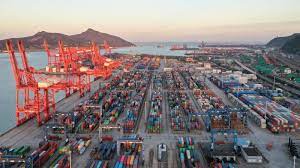- Recently, the conversation recognised the intricate and multifaceted nature of free trade, emphasising its potential benefits for peace and economic growth while also acknowledging historical and contemporary problems in fostering equal outcomes.
Evolution of Free Trade ideology:
- In the 19th century, political reformers, led by Adam Smith and inspired by Thomas Hobbes, saw free trade as a means to defeat despotism, end wars, and reduce wealth inequalities.
- The era’s economic cosmopolitanism embodied progressive themes such as anti-militarism, anti-slavery, and anti-imperialism.
- US Populists and Tariff Opposition: In the late nineteenth century, US populists opposed both the gold standard and import tariffs, which they said helped big business while harming common people.
- They advocated replacing tariffs with a more equal progressive income tax.
- Socialists’ Perspective on Free Trade in the Early Twentieth Century Then, in the early twentieth century, many socialists saw free trade, backed by supranational regulation, as an antidote to militarism, wealth disparities, and monopolies.
- Liberal Reformers’ Views on Protectionism: The 19th-century liberals and reformers were free traders because they believed protectionism suited the interests of landed nobles, business monopolies, and warmongers.
- They believed economic nationalism was synonymous with imperialism and aggression.
- The historian Marc-William Palen quotes a 1919 essay by the economist Joseph Schumpeter, who saw imperialism as a “monopolistic symptom of atavistic militarism and protectionism—an ailment that only democratic free-trade forces could cure.”
Misconceptions and perceptions about free trade:
- Controversial term: free trade has been controversial in economics, with many claiming that it contributes to increased inequality.
- However, there is some validity to the anti-trade viewpoint, as increased trade has contributed to rising inequality and the decline of the middle class in the United States and other advanced economies in recent decades.
- Blind Spot of Globalisation If free trade earned a negative reputation, proponents of globalisation ignored or pretended that nothing could be done to change it.
- This blind spot allowed political leaders like Donald Trump to weaponize trade while demonising racial and ethnic minorities, immigrants, and economic competitors.
- Diverse Opposition: Right-wing populists are not the only ones who oppose trade; radical leftists, climate activists, food safety advocates, human-rights activists, labour unions, consumer advocates, and anti-corporate groups are also against it.
- US President Joe Biden has distanced himself from free trade, stating that developing a secure, green, fair, and resilient US economy should take precedence above hyper-globalization.
- Obstacle to Social Justice: All progressives feel that free trade impedes progress towards social justice.
Instrumentalisation of Trade:
1) Instrumentalized for Authoritarian end:
- Under American Revolution: An especially heinous example is Antebellum America, where free commerce cemented slavery.
- During the crafting of the United States Constitution in 1787, America’s slave-owning southerners ensured that the wording prohibited export taxes. They realised that unrestricted commerce would keep plantation agriculture viable while also preserving the slavery system.
- When the North vanquished the South in the American Civil War, slavery was abolished, and free trade was replaced by protectionism, which benefited Northern commercial interests more.
- British imperialism: Following the abolition of the Corn Laws in 1846, the British government formally abandoned protectionism and pushed Europe to sign free-trade treaties.
2) Instrumentalized for militaristic ends:
- When the British found weak potentates ruling over lucrative commodities and marketplaces in Africa, the Middle East, and Asia, they used military force to compel free trade.
- The British waged the historic Opium Wars in the mid-nineteenth century to force Chinese authorities to open their markets to British and other Western commodities, allowing Western countries to purchase Chinese tea, silk, and porcelain without depleting their gold reserves.
- The opium was farmed in India, where a British monopoly drove farmers to work in deplorable conditions that caused long-lasting scars.
- Free trade facilitated repression and conflict, and vice versa.
Post-World War II trade regime:
- The American architects of the International Trade Organisation followed in the footsteps of Cordell Hull, President Franklin D. Roosevelt’s secretary of state, believing that free trade would bring about global peace.
- Hull was an economic cosmopolitan who supported Richard Cobden, a radical free-trade advocate from the 19th century.
- The postwar order was intended to be a set of global laws that would end bilateralism and imperial advantages.
- While the US Congress ultimately failed to ratify the ITO, several of its core concepts, such as multilateralism and non-discrimination, persisted in the General Agreement on Tariffs and Trade (GATT), the predecessor to today’s World Trade Organisation (WTO).
- Commercial diplomacy replaced conflicts under GATT, and several non-Western countries, like Japan, South Korea, Taiwan, and China, grew their economies swiftly by tapping into global markets.
What are the current challenges to the trade regime?
- Rise of Corporate Influence: During this time, large firms and multinational corporations wielded significant power, influencing trade agreements to their benefit.
- Important issues such as environmental concerns, public health, human rights, economic security, and domestic equity were disregarded during trade negotiations since corporate interests were prioritised.
- Departure from initial Vision: Trade departed from the initial vision of leaders such as Cobden and Hull, who most likely saw it as a force for peace and prosperity, and instead became a cause of contention.
- Shift in Trade Dynamics: The dominance of corporate influence moved the focus of international trade from broader societal benefit to maximising profits and corporate interests.
Conclusion:
To make trade a good force, it must be democratised, as history has shown. This suggests that trade should benefit the general population, rather than simply a few individuals. This is a crucial lesson to remember when the global trade regime is reconstructed in the coming years.
Source: https://www.livemint.com/opinion/online-views/free-trade-has-two-faces-and-the-one-offering-harmony-must-prevail-11710416186596.html

